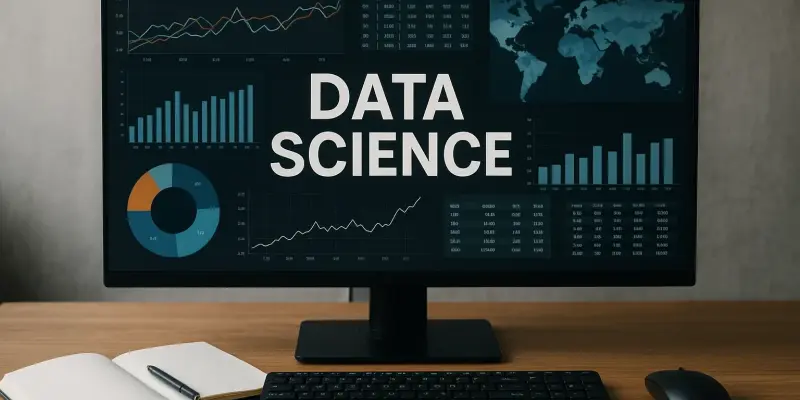The realm of technology today is seeing a fascinating evolution, wherein two vital disciplines are beginning to merge: Data Science and AI Engineering. This shift is marked by a significant change in how professionals approach their roles and responsibilities, reflecting broader industry trends and demands. As the tech landscape transforms, professionals like Sara Nóbrega, an AI Engineer, have navigated from Data Science to AI Engineering. Her journey provides a compelling example of how these fields are converging, highlighting distinctions, similarities, and the future direction of data-driven careers. This exploration is timely, as the demand for AI engineering roles is escalating with the promise of vast opportunities for those ready to forge a new path in their careers.
Transformative Beginnings: From Academic Roots to Professional Realms
Sara Nóbrega’s journey into AI Engineering began with her academic background in Physics and Astrophysics. This foundation equipped her with analytical skills and an understanding of complex systems. Upon completing her studies, Sara ventured into internships abroad, focusing on Data Science and Machine Learning, which refined her ability to manage data and construct predictive models. This invaluable experience led to a full-time position as a Data Scientist at an energy behemoth where she honed her craft in data modeling and analytics. Less than a year before embarking on her AI Engineering career, she transitioned to a leading logistics company, marking a significant pivot from data-centric roles to a broader scope in AI architecture. The initial steps into AI Engineering represent a substantial shift in focus, where the emphasis moved from data analysis to constructing backend components and deploying scalable AI solutions. The transition encompassed a shift in tools from those used for statistical analysis, such as Jupyter and MLflow, to developer-centric platforms like FastAPI and Microsoft Azure. Responsibilities escalated from model development to producing production-ready code, reflecting a deeper integration within engineering frameworks that prioritize efficiency and adaptability in real-world applications.
Changing Dynamics: The Convergence and Distinction of Roles
The technology industry is witnessing an evolving landscape where Data Science and AI Engineering roles are showing signs of convergence. The forecast suggests a 40% annual growth in AI engineering positions, predicting over a million new roles by 2027. As AI becomes increasingly embedded in various sectors, the skill sets required from Data Scientists and AI Engineers overlap more than ever. Data Scientists are now expected to be “full stack,” bearing competencies in cloud platforms, software engineering, and MLOps to ensure their models are practically viable. Job listings in recent years often demand cross-disciplinary skills, including deploying models, building data pipelines, and applying MLOps best practices, blurring traditional role distinctions. The emphasis has shifted towards understanding the entire lifecycle of machine learning (ML) models, incorporating deployment, monitoring, and sustainability in a business context. This evolution parallels the methods used by software developers, pointing to an integrated approach where distinct technological roles merge to foster synergy and innovation. The necessity for such blended skills reflects the industry’s direction towards efficiency, suggesting that professionals need to adapt to these dynamic changes to maintain relevance and impact.
Navigating the Transition: Challenges and Opportunities
The move from Data Science to AI Engineering poses several challenges but also opens a wealth of opportunities for professionals willing to embrace innovation and broaden their horizons. Understanding the nuanced implications of AI models involves delving into how they are deployed and impact business operations. This comprehensive perspective encourages practitioners to seek experiences that expose them to production code and interaction with seasoned AI Engineers, promoting a collaborative environment that thrives on shared knowledge and ambition.
Sara Nóbrega emphasizes the importance of engaging with tools like Docker and cloud computing services such as Azure and AWS to gain practical exposure necessary for smooth transitions. The challenges are manifold, including grappling with imposter syndrome and the pressure of acquiring new competencies rapidly. However, these hurdles are manageable with openness to continuous learning and a strategic approach to career development, focusing on the bigger picture in AI integration.
Reflecting on the Evolving Landscape: Future Prospects
In today’s rapidly evolving tech world, we’re witnessing a fascinating intersection between Data Science and AI Engineering. These two crucial fields, once distinct, are beginning to merge, creating new ways for professionals to approach their careers and responsibilities. This integration reflects broader industry trends and responds to growing demands in technology. As this transformation unfolds, AI Engineers like Sara Nóbrega exemplify the journey from Data Science to AI Engineering. Her career path underscores the convergence of these domains, revealing both their similarities and differences, while also pointing towards future developments in data-centric occupations. The growth of AI engineering presents ample opportunities for career development, appealing to those eager to shift their professional trajectory. With the industry’s increasing need for AI expertise, there is a significant promise for those willing to embrace this fusion of disciplines. This merger not only enhances the potential for innovation but also sets the stage for a new era in technology careers, where data and artificial intelligence work hand in hand to shape the future landscape. Thus, those in the tech sector can look forward to an exciting time that allows for new avenues of exploration and innovation.

